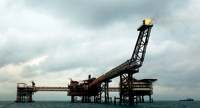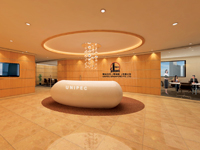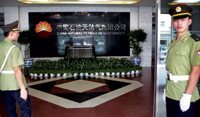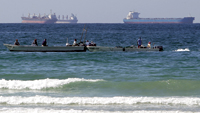
IRAN is making a new bid to exploit its ultra-heavy crude reserves, bringing in a new contender for three fields two years after awarding an $800 million contract to an earlier would-be developer. However, there is speculation that the timing of the latest agreement is part of recent official attempts to counter the impression that tough US sanctions are damaging the country’s energy sector.
Potential Russian investors feature in Iran’s ultra-heavy crude development plans.
Petroleum Engineering & Development Company (Pedec) says an $800 million contract has been awarded to what it described as the partnership of Kish International Neft and Gazprom Pars for the Kuh-e Mond, Bushgan and Kuh-e Kaki fields. The two companies have Russian and Ukrainian content, a source in Tehran says.
First-phase development over 39 months will target an output of 11,000 barrels per day, rising to an eventual 22,000 bpd in another 39 months. Seven wells will be drilled in the first phase and another 19 in the second, Pedec says.
National Iranian Oil Company (NIOC) managing director Ahmad Qalebani says the contract is one of 22 agreements scheduled to be finalised by the end of the Iranian year in late March.
Another three or four contracts will be signed in the coming days to raise the total so far to 12, he says. The remaining 10 promised contracts would presumably fall into the early part of the new year.
Iran claims to have been signing almost one contract per week since the autumn of 2011 – even as US-led sanctions have crippled its ability to tap international finance, and, in recent weeks, to even carry out transactions in US dollars and some other convertible currencies.
In late 2011, Pedec announced a $1 billion memorandum of understanding with Tatneft to develop the Zagheh heavy crude field for an eventual 55,000 bpd, but the Russian company quickly denied the report.
There have been several other such instances of premature or incorrect Iranian claims of contract awards since 2010.
In the case of the Kuh-e Mond, Bushgan and Kuh-e Kaki fields, sources says that the official description of the agreement as a contract is not accurate. “It’s a heads of agreement, which may be followed by talks on a possible buy-back deal later in the year,” says a source.
A firmer contract for the same three fields was signed in 2010 with Kish Island-based Kish International Petroleum Company (KIPC) – contingent on KIPC securing the necessary finance.
KIPC, which is part-owned by a non-Iranian entity, has had difficulty securing finance in China and elsewhere, but continues efforts in Russia and within Iran itself. Its $800 million contract remains in force.
























































































